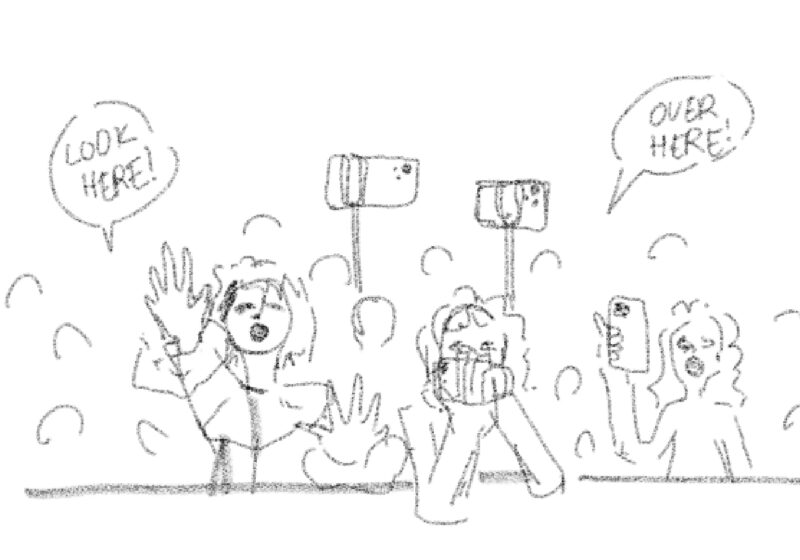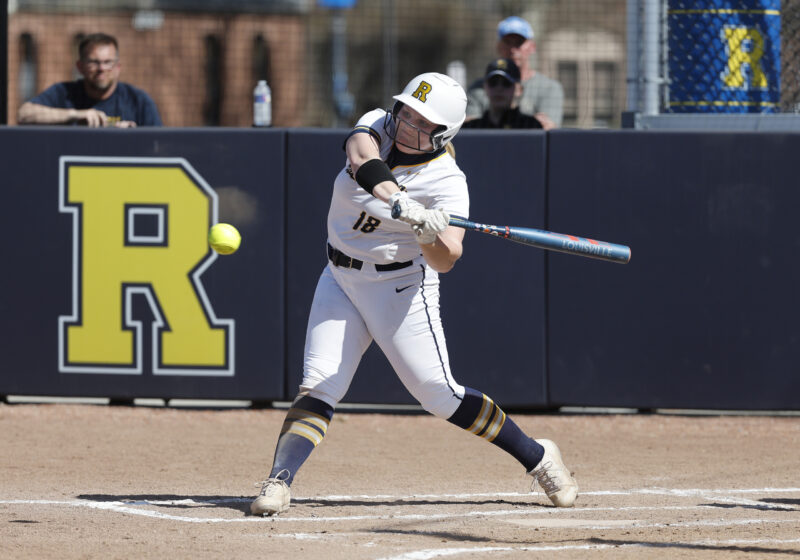It is not often that excitement and anticipation surrounds a recital the way it did for the degree recital of Nathan Heleine a senior jazz saxophonist. In a concert whose program featured new music, all of it composed and arranged by Heleine, the audience was taken on a very unique and transformative musical journey.Showing that it helps to know the right people, Heleine was clearly in his comfort zone while performing with his close friends onstage. Featuring an all-star cast from the current and former Eastman jazz scene the anticipation was also to witness some returning alumni. Accompanying Heleine were current Eastman students Jared Schonig on drums, Morgan Staples on piano and Kumiko Matsuoka on clarinet with homecoming alums Ryan Ferreira on guitar, Ike Sturm on bass, Eli Asher on trumpet and Mike Williams on bass trumpet. With these talented musicians at the helm, the audience felt secure, and rightfully trusted Heleine to deliver a very moving performance.The recital not only featured great music, but the paper program that was handed out to the audience was as artistic and beautiful as the performance itself. It featured a very modern, minimalist look and contained poetry to go along with each piece on the program. Elements like the programs, as well as the similarly crafted posters advertising the recital, created an atmosphere of enthusiasm and anticipation for the event. These steps subconsciously tell the audience that the performance they are viewing is to be taken seriously and is of the highest professional standards, well before the first notes of the concert are even played.When the music did begin, it was time to take notice. The first piece on the program, titled “Fields (About Looking),” was a provocative and mesmerizing journey into pulse and sound and a chance for Nathan Heleine to feature his gorgeous tone. Smooth rhythmic eighth notes between the marimba and bass started the unison melody. Slowly, the other instruments of the rhythm section poured in, matching this unison melody. This unison among the rhythm section was as haunting as it was beautiful, repeating its theme ominously in the background. When Heleine finally entered into the texture, the long, melodic sounds of his alto sax came as a gorgeous surprise. The initial power of Heleine’s first entrance did not diminish. The overtones of his saxophone sound were striking, with each note seeming to hit the walls of Kilbourn Hall and bounce back into the audiences lap. Put simply, Heleine’s tone was pure and rich. The piece droned on, finally dying away, and the rhythm section impressively demonstrated incredible concentration. They kept their rhythmic and harmonic unison for the entirety of the piece, not once missing a beat. The next chart on the program, titled “Under the Sky,” was a chance for the rest of the jazz combo to strut itself as well. The piece took the energy level of the concert way up, and the sharp melody got the audience members into a groove. Exceptional solos this time were played by Heleine, as well as Asher on trumpet, Ferreira on guitar and Schonig on drums. The following piece, “Sometimes I Forget Completely,” was another chance for the combo to exhibit their technical mastery and tight playing. As an interesting touch to the music, a synthesizer was utilized by Staples, creating some very cool effects that really did seem to add to the energy of the music. The piece worked its way down to the frailest sound possible before dying out, at which point the three winds took over in a smooth restatement of the melody, finally taking the piece out. More incredible statements made by the soloists in the piece, although my one complaint might be that sometimes the drums were a little too present. During a few solos, the drum fills began to detract from what the soloist was saying. This is only a very slight criticism, since the percussion was great throughout the concert, but at times, Schonig was almost too talented for the given moment, and could have backed off a little. Heleine drew in the audience in solo in “When the Sun Has Gone Down” with an unaccompanied solo, and his beauty of phrase and finesse amounted to a moment whose beauty was unmatched by anything else in the program. My favorite moment in the recital came when Heleine shared a beautiful story with the audience right before the start of “Midnight Tale.” Heleine told of how he and his close friend, bass trumpeter Mike Williams, had been traveling a few years ago in North Carolina. One night they didn’t sleep at all, and when morning was approaching, they decided to drive up into the Blue Ridge Mountains to see the sun rise. On the way there, Williams had been humming this tune that he couldn’t get out of his head, an old Arabic folk melody. When they arrived to watch the sun come up, Williams taught the tune to Heleine, and even though they were both tired after a long night, inspired by the magnificence of the moment, they took out their instruments and played this song while the sun rose. The musical experience that ensued was all the more powerful because of the back story, and the audience now had an appreciation of how this music had touched Heleine’s soul. The arrangement itself was very tastefully done, lending itself to what seemed like an authentic sound for the Semitic-sounding Phrygian major mode. The piece took advantage of the beauty and harmony of fifths, creating the drone-like sound, and the 7/8 rhythm of the music was well commanded by the musicians. The recital came to a close with the longest piece on the program, “The Beauty that Causes Havoc,” a chart that seemed to be the summation of everything the recital had been about. The music had many different tempos and many different moods in general, seeming to transport the listener through a smorgasbord of emotions. An absolutely amazing drum solo emerged towards the end of the piece. Schonig took the beat as it was given to him, and almost as if through magic, his solo began to delay if not distort the audience’s perception of time and pulse. Schonig not only played amazing tricks on the audience’s ears, he did it all while still managing to hold the pulse together and still make a statement with his solo. At the end of the solo, there was a realization that the tempo had changed and we were now in a very different place than when the solo began. The transformation was as seamless as it was virtuosic. The piece reached an incredible high point before reaching an end, capping off one of the finest recitals of the entire year.Honesty was a key ingredient that made this recital great. Heleine put everything out there for the audience to see. These things were original compositions, which were a unique blend of jazz and minimalism, his actual instrument playing and, most importantly, his personality. This recital was a musical journey that encompassed a lifetime of work from Heleine, and it will not soon be forgotten by any one of those in attendance. Levy can be reached atjlevy@campustimes.org.
culture
Notes by Nadia: What’s wrong with being a fan?
I wish that people would just mind their business and stop acting like being a fan of an artist is “weird.”
Softball
UR softball defeats St. Lawrence, Skidmore, and splits with RPI
Gorecki opened the scoring in the first inning by doubling down the left field line, scoring Laygo from third.
first impressions
Making first impressions: Don’t get stuck in your head
Perhaps the only way to prevent yourself from sinking into that ocean of once-seen faces, to light a rescue beacon before it’s too late, is to do something remarkable.





